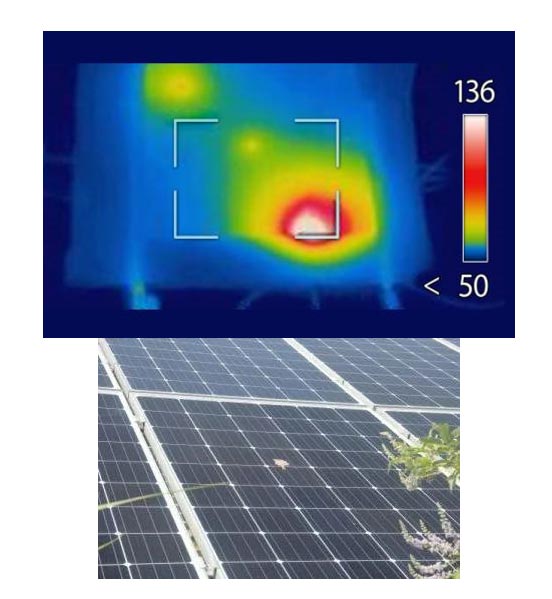Why are PV modules afraid of shadow occlusion? What is the "hot spot effect"?
Q: Why is the component afraid of shadow occlusion? What is the "hot spot effect"?
A: The shadow shielding of photovoltaic modules mainly includes utility poles, plants, bird droppings, dust, and the shielding of the front and rear rows of the module. Shadow shielding has a great impact on the power generation of the system. Serious shielding will cause "hot spot effect" and affect the power generation, even burning PV modules.
The so-called "hot spot effect" means that due to the partial occlusion of the shadow, the different degrees of dust settlement, and the pollution of bird droppings, the occluded part of the cell will not provide power contribution and become an energy-consuming load inside the module, and at the same time cause the local component of the module. When the temperature rises, the bypass diode is started, and the corresponding battery string is short-circuited, which affects the power generation; and the overheated area can cause the EVA to age and turn yellow, which reduces the light transmittance of the area, which further deteriorates the hot spot and affects the overall power generation.

The working current of a monolithic cell is mainly affected by the irradiance. The greater the irradiance, the higher the current. Some cells are shaded, which will seriously affect their working current.
The output voltage is increased through the series circuit inside the module, and the current of the series circuit has a barrel effect, that is, the lowest current in the entire string of circuits, so the current of the entire string of components is reduced accordingly, and the power generation of the system will also be affected.
Q: What effect does the voltage drop have on the photovoltaic system?
A: The voltage loss in a photovoltaic system can be characterized as:
Voltage loss = passing current × cable length × voltage factor
It can be seen from the formula that the voltage loss is proportional to the length of the cable. Therefore, during field exploration, the principle that the array to the inverter and the inverter to the grid connection point should be as close as possible should be followed. In general applications, the DC line loss between the PV array and the string inverter should not exceed 2% of the array output voltage, and the AC line loss between the inverter and the grid connection point should not exceed 5% of the inverter output voltage.
Under the guidance of the goal of "30.60 carbon peak and carbon neutrality", the photovoltaic industry has advantages and difficulties, opportunities and challenges. As the world's leading supplier of photovoltaic smart energy solutions, Trina Solar has been committed to promoting photovoltaic technology innovation and industrial development for 25 years. In the future, Trina Solar will expand the sunshine avenue of innovation and development, and comprehensively assist the whole county to advance and implement the "dual carbon" goal.


View More(Total0)Comment Lists